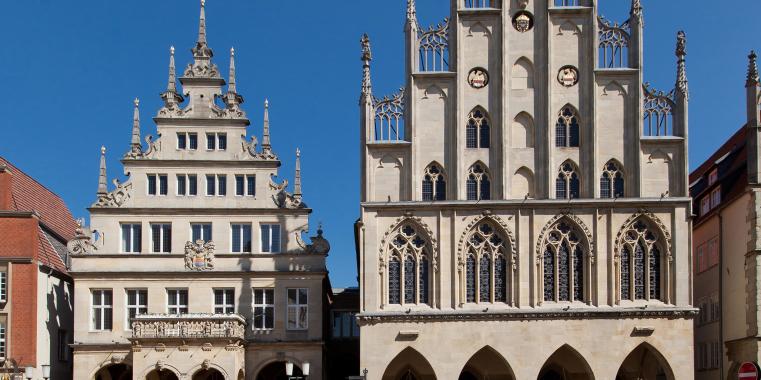
Living in Münster
The following introduction will give you a first idea of life in Münster. If you want to find out more go to Münster's international web site or watch the university's videos.
With a population of 280,000 the city of Münster is situated halfway between Cologne and Bremen. Münster is characterized by its historic city center and a strong influence of academic life with almost 50,000 students.
Münster is multi-faceted. It is Germany's capital of bicycles, it is the city of the famous Westphalian Peace Treaty which ended the Thirty Years War, it is a green city in every respect and - Münster is authorised to call itself "The World's Most Liveable City" since it came first at the International Awards for Liveable Communities LivCom-Award in 2004.
